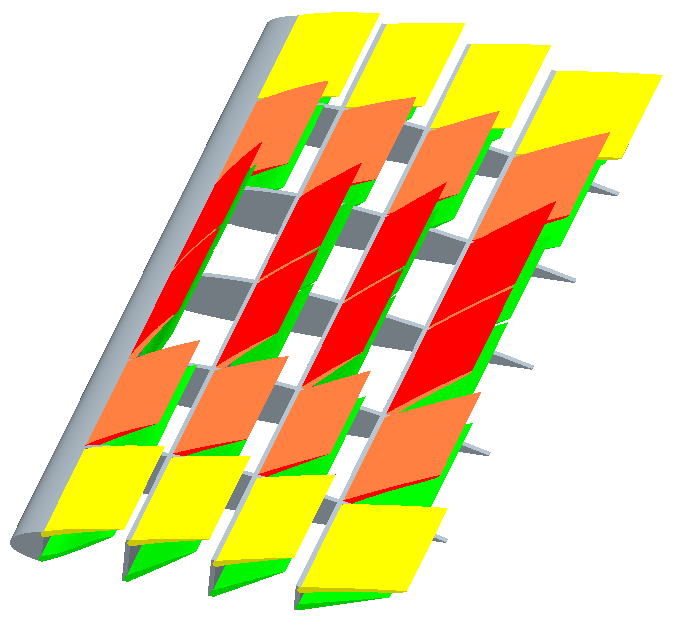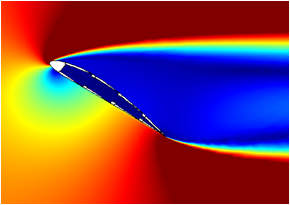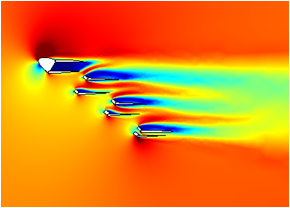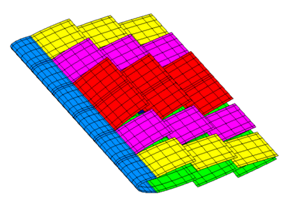The Development of a Bio-inspired Gust Alleviation System

This project concerns the development of a distributed system of feather-like structures for local flow sensing and control akin to the active and passive flight controls birds employ. The airfoil structure is based on a standard aircraft wing with a generic spar and rib configuration. An array of feather-like movable panels is installed on the upper and lower surfaces, thus replacing the flaps and ailerons. This system performs flight control duties in addition to gust alleviation. By replacing fixed surface panels, this system has the ability to deflect each feather into and out the wing's profile to maximize the system's operating range. Each feather is integrated into a closed-loop, hierarchical control system that enables the entire wing to adjust each feather's position individually or in clusters. Additionally, in circumstances where the gusting airflow is experienced at high angles of attack, the feathers have the capability to deflect such that they are parallel with the gusting airflow, allowing the gust to transpire through the airfoil and consequently minimize the drag disturbance.
To date, the project has focused on the development of closed-loop flight controllers when replacing the single trailing edge flap with a dual trailing edge split flap which enables asymmetric motion of the upper and lower trailing edge surfaces. A 2D dynamic model has been developed that implements an Output-Weighted Linear Quadratic Regulator to mimize the gust disturbances incurred and control effort required. The model is to be extended operate a series of four upper- and four lower-surface flaps from the leading to trailing edge. The results collected from simulations using the single and dual trailing edge has confirmed a successful exchange of trailing edge models can be performed will minimal change to the operating capability of the airfoil.
Currently, the system is undergoing development in multiple key areas, with research currently focusing on the following aspects:
1. Design and development of a wind tunnel test rig to allow experimental data to be collected for a single trailing-edge flap and an 8-flap bio-inspired wing section.
2. Development of a 2D and 3D adaptive panel method that incorporates multiple lifting surfaces (in the case of gust transpiration), boundary layer separation and reattachment, and time-varying surface motion.



